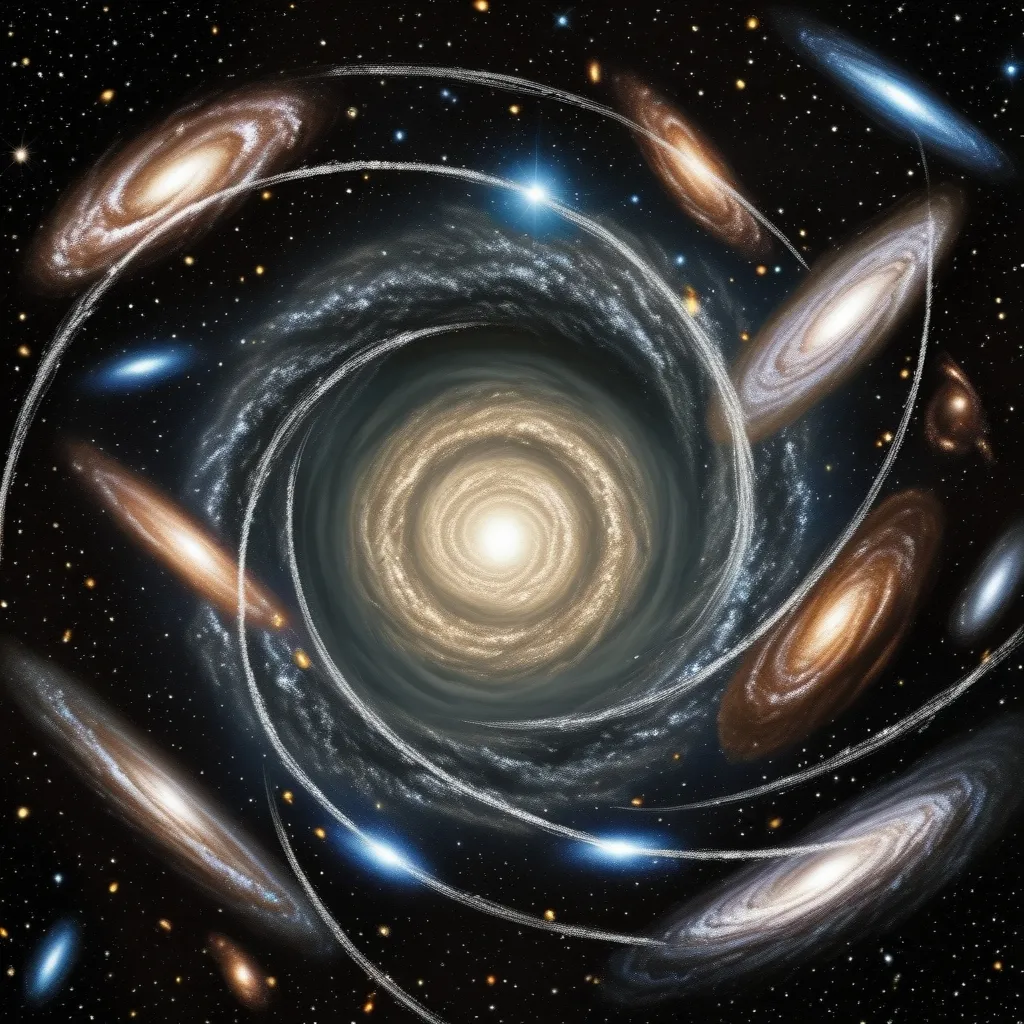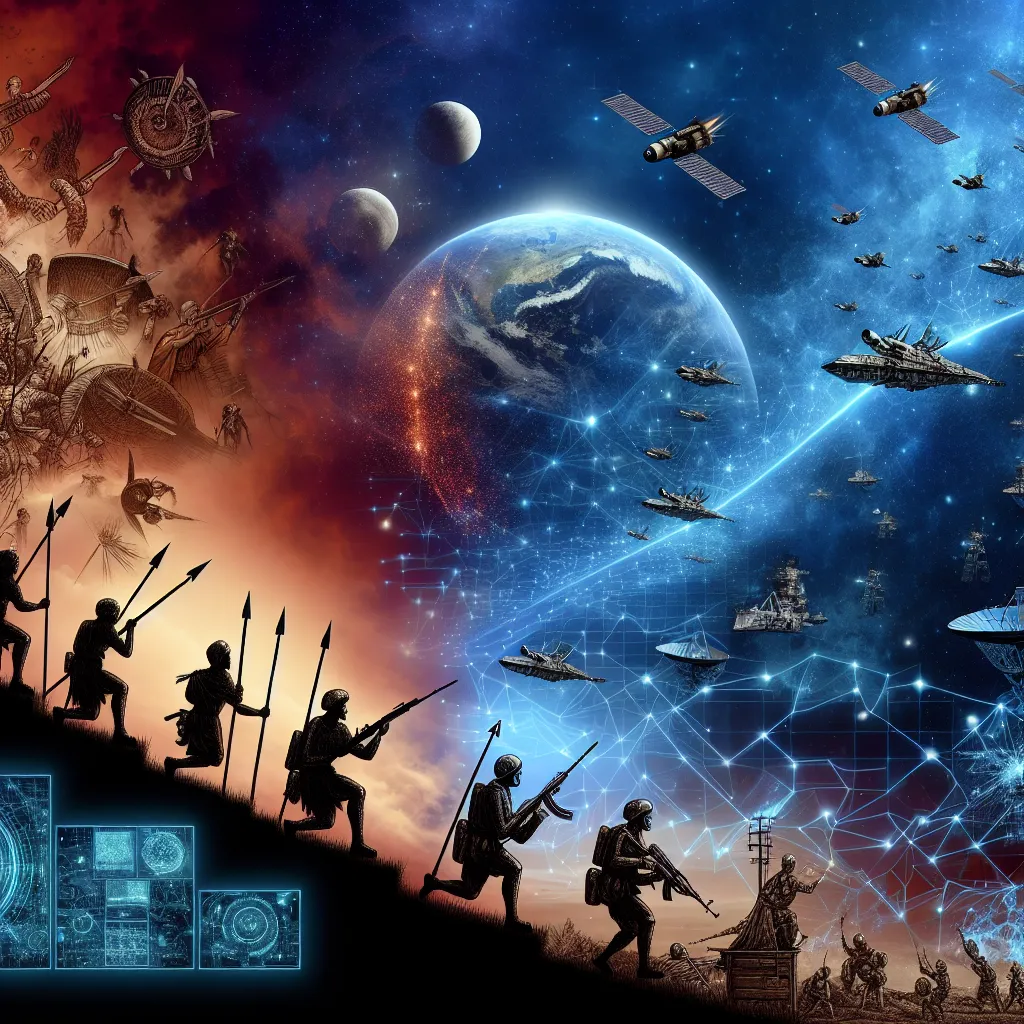In the far reaches beyond our everyday sky, a cosmic riddle has captured the imagination of scientists and curious minds alike – the Great Attractor. This invisible force is pulling our galaxy, the Milky Way, along with countless others, towards a mysterious point in space. The Great Attractor isn’t just an intrigue for astrophysicists; it’s a window into the grand dance of the cosmos, revealing secrets about how galaxies move, the forces binding them, and perhaps, the mysteries behind the very fabric of our universe.
It all kicked off back in the groovy 1970s when astronomers, while mapping out galaxies, noticed something funky going on. Galaxies, including our very own, were behaving like they were on a cosmic highway, all headed in the same direction, towards a singular point at speeds that didn’t seem ordinary. What made this mystery even more cloak-and-dagger was the location of this gravitational anomaly; it sits in the rather ominous-sounding Zone of Avoidance. Imagine a thick cosmic fog that clouds our view because it’s hiding behind the Milky Way’s dense dust and gas.
Despite these barriers, clever minds didn’t give up. They reached for radio waves and X-rays, tools that could cut through the murky curtain and unveil the hidden happenings of the universe. By the time the 80s rolled around, scientists had mapped out enough data to understand the gravitational ballet happening in this cosmic theater. Aptly named the Great Attractor, this force was mapped out with the help of redshift surveys, which use the light emitted by moving objects to measure their speed and distance.
Where exactly is this cosmic heavyweight located? The Great Attractor lounges around 250 million light-years away, nestled in the direction of the Hydra-Centaurus Supercluster. Its pull is felt across vast swathes of the universe, acting like a puppeteer for galaxies far and wide. This isn’t just a lone object hurling galaxies its way; it’s more akin to a sprawling collection of galaxy clusters. Think of it like a cosmic web, with the Great Attractor as the anchor, drawing everything in with invisible threads of gravity.
But the Great Attractor isn’t just hanging out there by itself. It has company in the form of the Laniakea Supercluster. Picture an enormous network stringing over 100,000 galaxies together, reaching across 500 million light-years. At the heart of this colossal setup lies the Great Attractor, serving as the gravitational anchor in this ballet of galaxies. This discovery gave a whole new meaning to understanding cosmic superclusters and set the stage for exploring the large-scale structure and forces that weave the universe together.
Touching closer to home, the Milky Way is part of this great cosmic drift. While it’s being pulled towards the Great Attractor, there’s no immediate danger. Earth isn’t moving towards some catastrophic end. The gravitational pull that’s tugging at us is only significant over vast cosmic scales. This gradual drag slows down our galaxy’s rush away from the Great Attractor, subtly tweaking our journey through the cosmic wilderness. It’s this interaction that provides insights into the complex dance between galaxies and the universe’s expansion.
What exactly lies at the heart of the Great Attractor remains a puzzle. Some see it as a massive dark matter hub or perhaps an enormous cluster of galaxies. Whichever the case, more investigation is definitely needed to unravel this cosmic whodunit. Yet, in the grand timeline of the universe, even the Great Attractor’s pull is not everlasting. The universe’s ongoing expansion will, in time, outpace any binding effect, leaving galaxies to drift apart and away.
Astoundingly, as our technology improves and our telescopes reach farther, the secrets of the Great Attractor slowly unfold. Cutting-edge tools like the Square Kilometre Array, a massive radio telescope in the making, promise to peer into the gravity wells and dark matter pools with unprecedented clarity. Each step forward not only brings a deeper understanding of the cosmos but also reveals the elegant, unseen tapestries woven into the night sky.
So why ponder this stellar curiosity, one might ask? For astrophysics and cosmology, the Great Attractor is both challenge and opportunity. It tests theories about gravity, the enigma of dark matter, and how cosmic structures evolve over eons. By untangling the mysteries of the Great Attractor, scientists hope to unravel fundamental questions about how our universe came to be, what it’s evolving into, and what laws govern the sprawling cosmos.
Amid these scientific quests lies a more human story. It’s about astronomers, those stargazing dreamers, who dedicate their lives to unraveling the unknown. Imagine the countless nights spent beneath the vastness of twinkling stars, driven by unanswered questions and the sheer thrill of discovery. Their relentless pursuit, despite seemingly insurmountable challenges, is a tribute to human curiosity and the timeless quest for knowledge.
At its core, the Great Attractor symbolizes something larger than the sum of its parts. Just as it orchestrates the motion of galaxies, it beckons humanity to explore, to question, and to seek understanding in the vast darkness. It invites us to wonder about the gravitational anomalies that hold sway over the universe, weaving galaxies into a cosmic web far more intricate than any tale woven on Earth.
As researchers and enthusiasts alike continue to ponder these celestial forces, the Great Attractor stands as a testament to the extraordinary mysteries that still await in the universe’s grand sprawl. It’s more than just an invisible pull in the universe; it’s an ongoing story, a cosmic whisper urging the inquisitive to look deeper, reach further, and continue the age-old journey into the unknown. And in this cosmic pursuit, there lies not only wisdom but a profound sense of unity with the universe that birthed us all.






